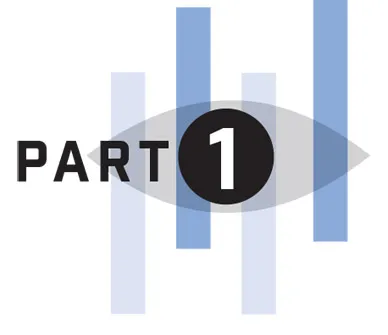DURING THE WINTER OF 2006—my senior year of undergrad studies—a tragedy occurred ten miles from my campus, changing the trajectory of my life. Kathryn Johnston, a ninety-two-year-old woman, was shot and killed by police in the living room of her Atlanta home. In what was deemed a “botched drug raid,” unidentified officers stormed Johnston’s home with assault weapons drawn—at 3:00 a.m.—murdering her without cause. Three officers discharged thirty-nine shots, fatally striking Johnston five times. These three officers, Jason Smith, Greg Junnier, and Arthur Tesler, then conspired to cover their transgressions.
In the court proceedings for Johnston’s homicide, it was determined that the police raid was based on and legitimated by falsified paperwork. Officer Tesler had lied in an affidavit, saying that illegal drugs were being harbored in Johnston’s home. Tesler swore under oath that an informant purchased crack cocaine at Johnston’s house, but during the trial the informant testified that he had never been to Johnston’s home.
Ultimately, all three officers pled guilty to federal charges of conspiracy to violate civil rights resulting in death. Officers Smith and Junnier also pled guilty to state charges of voluntary manslaughter and making false statements, while Smith admitted to planting bags of marijuana in Johnston’s home after killing her in an attempt to justify the home invasion and murder. The three officers were sentenced to prison terms ranging from five to ten years, to be followed by three years of supervised release after their prison terms, and were ordered to split the cost of Johnston’s funeral.
During the trial, Greg Junnier broke down on the witness stand, declaring, “I used to think I was a good person.” Jason Smith, weeping, said, “I pray daily for Ms. Johnston. I also pray other officers in Atlanta will have the moral fortitude I didn’t have.”1
At the conclusion of the trial, US attorney David Nahmias said, “As Atlanta police narcotics officers, these three defendants repeatedly failed to follow proper procedures and then lied under oath to obtain search warrants.” Nahmias concluded, “Their routine violations of the Fourth Amendment led to the death of an innocent citizen.” Further, according to an article recapping the trial, “The officers regularly presented false information to obtain warrants and . . . cut corners to make more time for lucrative side jobs providing additional security to businesses, often while on duty, and receiving cash payments.”2
Before the trial, these officers had vehemently declared their innocence. They claimed to have surveilled Johnston’s home for months, identifying it as an epicenter for drug trafficking. Tesler’s falsified affidavit had been the key to obtaining a no-knock warrant (a warrant that allows officers to enter private property without displaying a warrant or issuing credentials). Tesler knew that his “confirmation” of illicit activity in Johnston’s home would be enough to persuade the judge to issue a no-knock warrant, particularly because her community was stigmatized as “the ghetto.”3
No-knock search warrants are issued by judges at the request of law enforcement to acquire evidence that can be quickly destroyed. They are also granted in cases where it is believed an officer’s safety is at risk while executing the warrant. No-knock warrants are predominantly issued in impoverished, governmentally neglected communities of color, marred by failing schools, a lack of economic opportunity, and drug trafficking. No-knock warrants are commonplace in these communities, and they give police the authority to conduct militarized “dynamic entry” raids. Dynamic entry raids include the use of door-breaching shotguns, battering rams, sledgehammers, Halligan bars (for smashing windows), ballistic shields, Colt submachine guns, light-mounted AR-15 rifles, Glock .40-caliber sidearms, body armor, Kevlar helmets, and potent flash-bang grenades. Under the legislative power endowed by no-knock warrants, these militarized weapons are subject to be used at an officer’s discretion, without accountability.4
Dynamic entry raids are conducted by SWAT officers. SWAT is a specialized enforcement taskforce pioneered in Los Angeles in 1967. Kevin Sack, a New York Times columnist, details the rapid growth of SWAT teams, writing, “Today, almost every police agency with at least 100 officers, and about a third of all smaller ones, either has its own full-time unit or participates in a part-time or multijurisdictional team.”5 Dr. Peter B. Kraska, a criminologist at Eastern Kentucky University, writes that SWAT deployments increased “roughly fifteenfold between 1980 and 2000 as the drug war escalated.”6 According to Michelle Alexander, “The most common use of SWAT teams is to serve narcotics warrants, usually with forced, unannounced entry into the home.”7 The ACLU found that 42 percent of SWAT search warrant raids were conducted in black communities, and 12 percent in Hispanic neighborhoods.8 This history and these statistics begin to explain the disproportionate number of black and brown bodies warehoused within our nation’s prisons, jails, and detention centers.9
Sack writes that the Bureau of Justice Statistics illustrates that “the no-knock process often begins with unreliable informants and cursory investigations that produce affidavits signed by unquestioning low-level judges. It is not uncommon for the searches to yield only misdemeanor-level stashes, or to come up empty.”10 Not only are dynamic entry raids ineffective, they are also extremely dangerous, as evidenced in Johnston’s case. The National Tactical Officers Association (NTOA) has consistently contested the overuse of dynamic entry raids, and its chairman, Robert Chabali (2012–2015), recommended that dynamic entry “never be used to serve narcotics warrants.”11 Chabali, a SWAT veteran, said, “It just makes no sense. . . . Why would you run into a gunfight? If we are going to risk our lives, we risk them for a hostage, for a citizen, for a fellow officer. You definitely don’t go in and risk your life for drugs.”12
Kathryn Johnston’s murder was an affront to justice. It placed a spotlight on the Atlanta Police Department that revealed broad corruption in the narcotics unit and eventual guilty pleas. Upon learning about this corruption, I became infatuated with learning about the War on Drugs. As I researched I soon learned that Johnston’s case was not an anomaly—it was merely the latest tragedy in a host of civil rights breaches caused by drug war legislation.
What I learned changed my life. It compelled me to devote my ministry to defending the dignity of poor, undereducated, disenfranchised people living within stigmatized neighborhoods. While the police misconduct exposed in Johnston’s case provoked major changes throughout the APD, it inspired me to commit my life to ending mass incarceration.
As someone who grew up with numerous friends who did not have black men in their lives (fathers, brothers, uncles, and cousins), I was acutely aware that incarceration was crippling my community. I knew that many black men with the potential to be community role models were continuously being extracted from neighborhoods and transported to prison. But I did not know at the time that incarceration was also adversely affecting black women, other communities of color, and society’s most vulnerable populations.
I also did not realize that while our criminal justice system was being celebrated as the most responsible way to reform and rehabilitate people serving time, mass incarceration had corrupted and perverted our system into a complex in which exploitation, profiteering, and inhumane treatment were the norm. Upon awakening to these realities, the Spirit convicted me and compelled me to become an advocate and activist for those rendered voiceless by the system. While there are no voiceless people, when powerful systems and structures go astray, they mute the voices of those who are persecuted and crushed by systemic sin and immorality.
As Christians, people called to seek the peace and prosperity of our cities, we must oppose policies like no-knock warrants, dramatic entry, and the ability for one officer’s unsubstantiated claim to legitimate warfare. These polices wreak havoc on vulnerable communities, cause senseless deaths—think of Kathryn Johnston, Aiyana Jones (a seven-year-old in Detroit), and Eurie Stamps (a sixty-eight-year-old grandfather in Framingham, Massachusetts)—and embolden police corruption.
THE WAR ON DRUGS
While SWAT teams are on the frontlines enforcing the War on Drugs, Michelle Alexander notes that “police and prosecutors did not declare the War on Drugs.”13 Drug war rhetoric has been strategically championed by presidents, congressional representatives, and senators. While officers are frequently vilified and scapegoated for the drug war, often they are simply carrying out the orders of their superiors.
Richard Nixon initially declared the War on Drugs in 1971. His administration oversaw the creation of new measures, such as mandatory sentencing and no-knock warrants, and worked tirelessly to bolster federal drug control agencies. The War on Drugs led to the creation of the Drug Enforcement Administration (DEA) in 1973. The DEA’s mission was to establish a single, unified command to wage “an all-out global war on the drug menace.”14
The War on Drugs was expanded under Ronald Reagan’s presidency, and funding radically increased.15 The Reagan administration launched an offensive on drug crimes at a time when only 2 percent of Americans felt that drug crimes were the most important issue facing the country.16 This expansion of the drug war bred critical policy changes, increasing the penalties for drug offenses while simultaneously incentivizing drug arrests for law enforcement agencies. Reagan granted state and local law enforcement agencies the right to keep most of the cash and assets seized during drug raids and arrests.17 Alexander says, “Suddenly, police departments were capable of increasing the size of their budgets, quite substantially, simply by taking the cash, cars, and homes of people suspected of drug use or sales.”18
The use of mandatory minimum sentences for drug offenses also expanded under Reagan. Mandatory minimums are often cited as an important way of keeping violent criminals and drug lords off the streets, but these sentences are most often handed down against nonviolent drug offenders.19 The Anti-Drug Abuse Act of 1986 changed drug sentencing, creating mandatory minimum sentences typically ranging from five to ten years.20 In the rest of the developed world, a first-time drug offense is typically only met with up to six months in jail.21
Statistics illustrate that mandatory minimums disproportionately affect minority offenders. Until 2010, a five-year mandatory minimum was triggered for the sale of five hundred grams of powder cocaine, a drug more typically associated with white users, while the sale of five grams of crack, a drug more typically ass...


